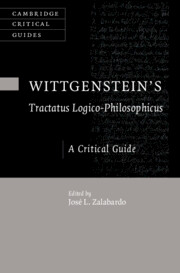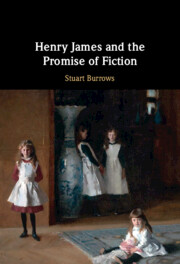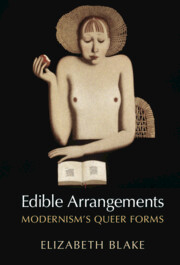141 results
Chapter 9 - Philostratus in Verse
- from Part II - Lives and Afterlives
-
-
- Book:
- Writing Literary History in the Greek and Roman World
- Print publication:
- 27 June 2024, pp 187-210
-
- Chapter
- Export citation
20 - Queer American Poetry Now
- from Queer Genre
-
-
- Book:
- The Cambridge History of Queer American Literature
- Published online:
- 17 May 2024
- Print publication:
- 06 June 2024, pp 361-383
-
- Chapter
- Export citation
Chapter 14 - Railway Imaginary in the 1830s
-
-
- Book:
- Nineteenth-Century Literature in Transition: The 1830s
- Published online:
- 30 May 2024
- Print publication:
- 06 June 2024, pp 304-318
-
- Chapter
- Export citation
Chapter 22 - Morphology
- from Part IV - Philosophy and Science
-
-
- Book:
- Goethe in Context
- Published online:
- 16 May 2024
- Print publication:
- 23 May 2024, pp 216-224
-
- Chapter
- Export citation
Chapter 8 - Poetry
- from Part II - Literature
-
-
- Book:
- Goethe in Context
- Published online:
- 16 May 2024
- Print publication:
- 23 May 2024, pp 77-85
-
- Chapter
- Export citation
Chapter 49 - Sending Specimens to the Laboratory
- from Section 4 - Laboratory Diagnosis
-
- Book:
- Clinical and Diagnostic Virology
- Published online:
- 11 April 2024
- Print publication:
- 18 April 2024, pp 241-242
-
- Chapter
- Export citation
Chapter 24 - Wagner’s Apprenticeship
- from IV - Life, Language, and the Ancient World
-
-
- Book:
- Wagner in Context
- Published online:
- 14 March 2024
- Print publication:
- 14 March 2024, pp 239-248
-
- Chapter
- Export citation
Chapter 9 - Franz Liszt
- from II - People
-
-
- Book:
- Wagner in Context
- Published online:
- 14 March 2024
- Print publication:
- 14 March 2024, pp 95-103
-
- Chapter
- Export citation
Chapter 2 - Modality in Wittgenstein’s Tractatus
-
-
- Book:
- Wittgenstein's <I>Tractatus Logico-Philosophicus</I>
- Published online:
- 07 March 2024
- Print publication:
- 14 March 2024, pp 24-49
-
- Chapter
- Export citation

Wittgenstein's Tractatus Logico-Philosophicus
- A Critical Guide
-
- Published online:
- 07 March 2024
- Print publication:
- 14 March 2024
Chapter 7 - Translating Chronic Pain and the Ethics of Reading in the Personal Essay
- from Part II - Developments: Forms
-
-
- Book:
- Literature and Medicine
- Published online:
- 17 January 2024
- Print publication:
- 18 January 2024, pp 120-136
-
- Chapter
- Export citation
Chapter 6 - The Relation between Matter and Form in Artefacts
-
- Book:
- Aristotle's Ontology of Artefacts
- Published online:
- 14 December 2023
- Print publication:
- 21 December 2023, pp 181-218
-
- Chapter
- Export citation
4 - First Movement
-
- Book:
- Berlioz: <i>Symphonie Fantastique</i>
- Published online:
- 30 November 2023
- Print publication:
- 30 November 2023, pp 48-63
-
- Chapter
- Export citation
Introduction
-
- Book:
- Henry James and the Promise of Fiction
- Published online:
- 26 October 2023
- Print publication:
- 09 November 2023, pp 1-24
-
- Chapter
- Export citation
Introduction: Pater and English Literature
-
-
- Book:
- Walter Pater and the Beginnings of English Studies
- Published online:
- 14 November 2023
- Print publication:
- 09 November 2023, pp 1-32
-
- Chapter
- Export citation
Chapter 6 - Form, Matter, and Metaphysics in Walter Pater’s Essay on ‘Style’
- from Part I - General
-
-
- Book:
- Walter Pater and the Beginnings of English Studies
- Published online:
- 14 November 2023
- Print publication:
- 09 November 2023, pp 118-132
-
- Chapter
- Export citation

Henry James and the Promise of Fiction
-
- Published online:
- 26 October 2023
- Print publication:
- 09 November 2023
Introduction
-
- Book:
- An Introduction to Fantasy
- Published online:
- 07 October 2023
- Print publication:
- 07 September 2023, pp 1-52
-
- Chapter
- Export citation
Chapter 1 - Wisdom in Proverbs
-
- Book:
- The Theology of the Book of Proverbs
- Published online:
- 10 January 2024
- Print publication:
- 31 August 2023, pp 12-28
-
- Chapter
- Export citation

Edible Arrangements
- Modernism's Queer Forms
-
- Published online:
- 26 September 2023
- Print publication:
- 31 August 2023



